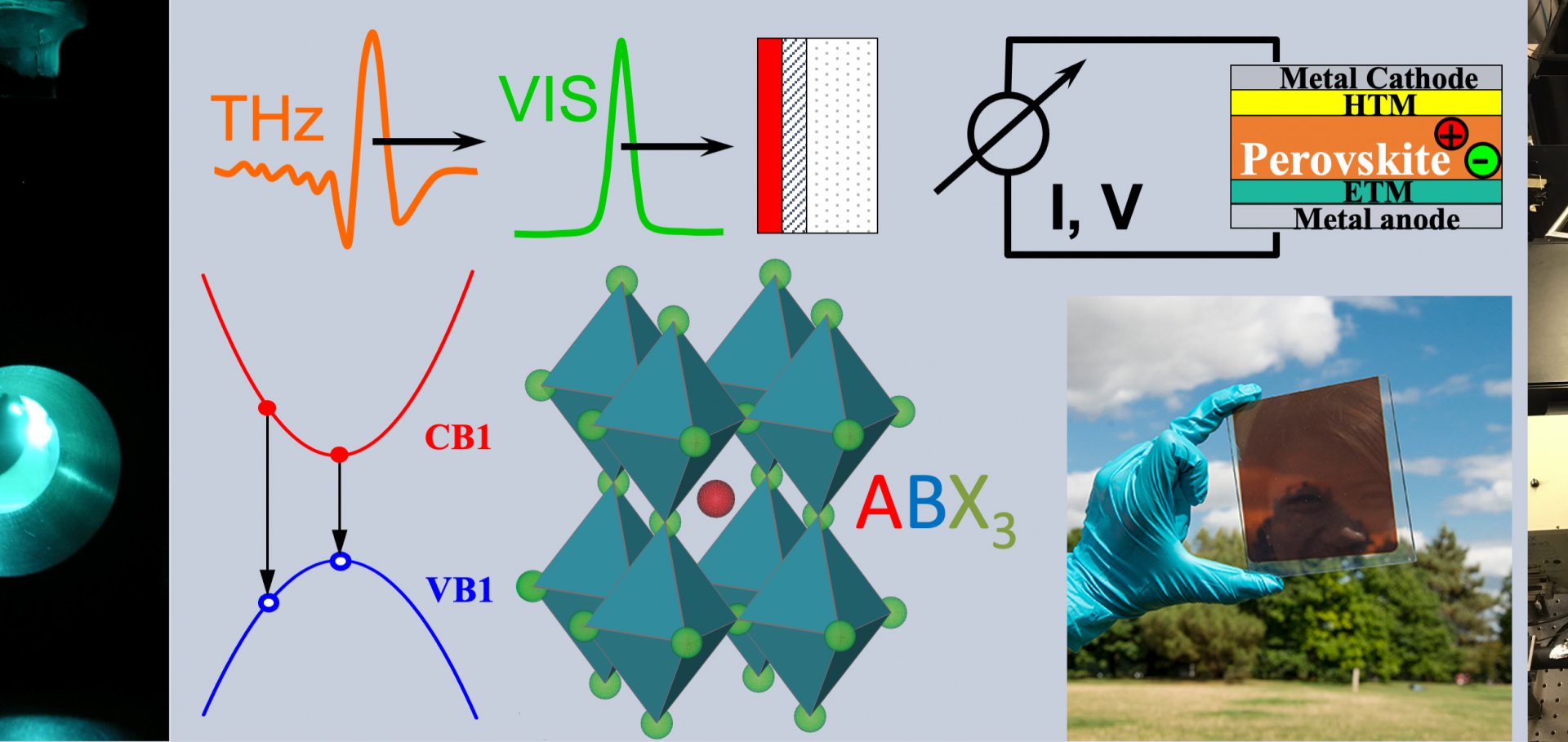Charge-carrier dynamics in organic-inorganic metal halide perovskites
Annual Review of Physical Chemistry Annual Reviews 67:1 (2016)
Abstract:
Hybrid organic-inorganic metal halide perovskites have recently emerged as exciting new light-harvesting and charge-transporting materials for efficient photovoltaic devices. Yet knowledge of the nature of the photogenerated excitations and their subsequent dynamics is only just emerging. This article reviews the current state of the field, focusing first on a description of the crystal and electronic band structure that give rise to the strong optical transitions that enable light harvesting. An overview is presented of the numerous experimental approaches toward determining values for exciton binding energies, which appear to be small (a few milli-electron volts to a few tens of milli-electron volts) and depend significantly on temperature because of associated changes in the dielectric function. Experimental evidence for charge-carrier relaxation dynamics within the first few picoseconds after excitation is discussed in terms of thermalization, cooling, and many-body effects. Charge-carrier recombination mechanisms are reviewed, encompassing trap-assisted nonradiative recombination that is highly specific to processing conditions, radiative bimolecular (electron-hole) recombination, and nonradiative many-body (Auger) mechanisms.Breaking the symmetry in molecular nanorings
Journal of Physical Chemistry Letters American Chemical Society 7:2 (2016) 332-338
Abstract:
Because of their unique electronic properties, cyclic molecular structures ranging from benzene to natural light-harvesting complexes have received much attention. Rigid π-conjugated templated porphyrin nanorings serve as excellent model systems here because they possess well-defined structures that can readily be controlled and because they support highly delocalized excitations. In this study, we have deliberately modified a series of six-porphyrin nanorings to examine the impact of lowering the rotational symmetry on their photophysical properties. We reveal that as symmetry distortions increase in severity along the series of structures, spectral changes and an enhancement of radiative emission strength occur, which derive from a transfer of oscillator strength into the lowest (k = 0) state. We find that concomitantly, the degeneracy of the dipole-allowed first excited (k = ±1) state is lifted, leading to an ultrafast polarization switching effect in the emission from strongly symmetry-broken nanorings.Formation dynamics of CH3NH3PbI3 Perovskite following two-step layer deposition
Journal of physical chemistry letters American Chemical Society 7:1 (2016) 96-102
Abstract:
Hybrid metal-halide perovskites have emerged as a leading class of semiconductors for optoelectronic devices because of their desirable material properties and versatile fabrication methods. However, little is known about the chemical transformations that occur in the initial stages of perovskite crystal formation. Here we follow the real-time formation dynamics of MAPbI3 from a bilayer of lead iodide (PbI2) and methylammonium iodide (MAI) deposited through a two-step thermal evaporation process. By lowering the substrate temperature during deposition, we are able to initially inhibit intermixing of the two layers. We subsequently use infrared and visible light transmission, X-ray diffraction, and photoluminescence lifetime measurements to reveal the room-temperature transformations that occur in vacuum and ambient air, as MAI diffuses into the PbI2 lattice to form MAPbI3. In vacuum, the transformation to MAPbI3 is incomplete as unreacted MAI is retained in the film. However, exposure to moist air allows for conversion of the unreacted MAI to MAPbI3, demonstrating that moisture is essential in making MAI more mobile and thus aiding perovskite crystallization. These dynamic processes are reflected in the observed charge-carrier lifetimes, which strongly fluctuate during periods of large ion migration but steadily increase with improving crystallinity.Hybrid perovskites for photovoltaics: charge-carrier recombination, diffusion, and radiative efficiencies
Accounts of chemical research American Chemical Society 49:1 (2016) 146-154
Abstract:
Photovoltaic (PV) devices that harvest the energy provided by the sun have great potential as renewable energy sources, yet uptake has been hampered by the increased cost of solar electricity compared with fossil fuels. Hybrid metal halide perovskites have recently emerged as low-cost active materials in PV cells with power conversion efficiencies now exceeding 20%. Rapid progress has been achieved over only a few years through improvements in materials processing and device design. In addition, hybrid perovskites appear to be good light emitters under certain conditions, raising the prospect of applications in low-cost light-emitting diodes and lasers. Further optimization of such hybrid perovskite devices now needs to be supported by a better understanding of how light is converted into electrical currents and vice versa. This Account provides an overview of charge-carrier recombination and mobility mechanisms encountered in such materials. Optical-pump-terahertz-probe (OPTP) photoconductivity spectroscopy is an ideal tool here, because it allows the dynamics of mobile charge carriers inside the perovskite to be monitored following excitation with a short laser pulse whose photon energy falls into the range of the solar spectrum. We first review our insights gained from transient OPTP and photoluminescence spectroscopy on the mechanisms dominating charge-carrier recombination in these materials. We discuss that mono-molecular charge-recombination predominantly originates from trapping of charges, with trap depths being relatively shallow (tens of millielectronvolts) for hybrid lead iodide perovskites. Bimolecular recombination arises from direct band-to-band electron-hole recombination and is found to be in significant violation of the simple Langevin model. Auger recombination exhibits links with electronic band structure, in accordance with its requirement for energy and momentum conservation for all charges involved. We further discuss charge-carrier mobility values extracted from OPTP measurements and their dependence on perovskite composition and morphology. The significance of the reviewed charge-carrier recombination and mobility parameters is subsequently evaluated in terms of the charge-carrier diffusion lengths and radiative efficiencies that may be obtained for such hybrid perovskites. We particularly focus on calculating such quantities in the limit of ultra-low trap-related recombination, which has not yet been demonstrated but could be reached through further advances in material processing. We find that for thin films of hybrid lead iodide perovskites with typical charge-carrier mobilities of ∼30cm(2)/(V s), charge-carrier diffusion lengths at solar (AM1.5) irradiation are unlikely to exceed ∼10 μm even if all trap-related recombination is eliminated. We further examine the radiative efficiency for hybrid lead halide perovskite films and show that if high efficiencies are to be obtained for intermediate charge-carrier densities (n ≈ 10(14) cm(-3)) trap-related recombination lifetimes will have to be enhanced well into the microsecond range.A mixed-cation lead mixed-halide perovskite absorber for tandem solar cells
Science American Association for the Advancement of Science 351:6269 (2015) 151-155


